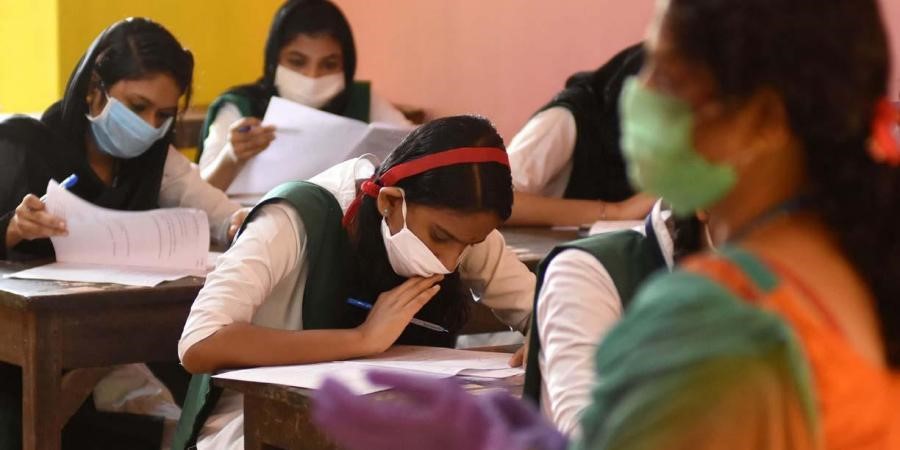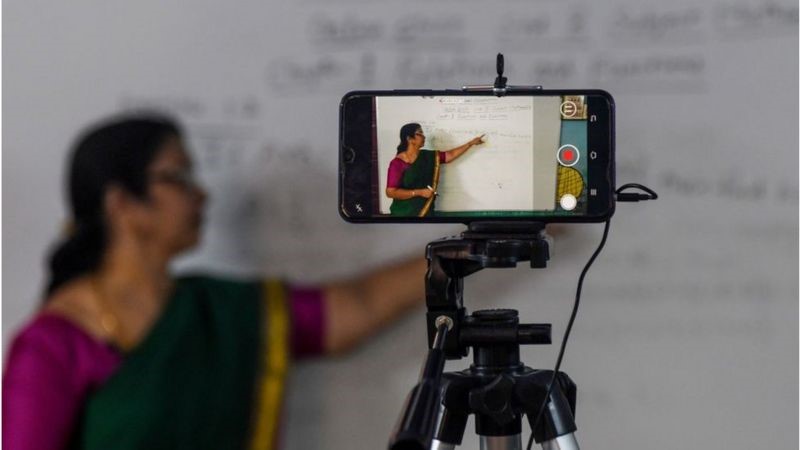
The rapid spread of COVID-19 throughout the world has forced politicians, policy-makers, administrators, and educators to make impulsive decisions about the state of education. Worldwide, many schools have shut down campuses and in-person learning in traditional classroom settings, transforming education into primarily virtual settings. Remote learning demands the usage of advanced technology, requiring all students and educators to have computers, stable Wi-Fi, access to applications such as Zoom, as well as electricity and a functional place to complete school-work throughout the day. The switch to remote learning is necessary in order to halt the spread of COVID-19; however, many places around the world do not have the resources and accessibility to be able to effectively shift to virtual education. Education is one of the most important tools in providing people knowledge that will carry with them throughout their lives. Moreover, in impoverished communities such as Wayanad, India, education is especially significant in providing opportunities to become successful, including learning the English language, math, reading, writing, and vocational skills. Education also allows individuals to gain valuable skills to improve their quality of life; for example, through Profugo’s programs at the Center of Development. Through these educational programs, community members learn sustainable agriculture methods, health and wellness information, and much more. For under-resourced communities like Wayanad, education during the pandemic is complicated.
Many small, rural communities in countries such as India are already struggling during the pandemic due to the restricted access to adequate healthcare, including very few tests and treatment options (Dhillon). If a few people contract COVID-19, “‘it can sneak into every village in the country’” (Dhillon). In Bihar, a rural and poor state in India, the ratio of doctors to people is less than 4 per 1,000 (Dhillon). These extremely appalling facts and statistics prove the great need for social distancing during this time, which includes not having in-person school or educational programs. Unfortunately, many communities such as Wayanad and Bihar do not have access to the advanced technology that schools in most other countries are using in order to have virtual schooling. Because of this reality, many schools were forced to stay open at the beginning of the pandemic, risking the health of its students, teachers, and their families. Once the nation-wide lockdown was put into place in March, all schools were required to shut down or shift to virtual education, but the difficulties presented have been problematic.

Not only does school provide students with opportunities for success and growth, but there are also benefits of going to school past the academics. Some schools provide children with meals that they would not necessarily get at home. At the beginning of the pandemic when schools were still open, many states in India stopped serving meals, causing many students to lack nutrition, as well as parents fully taking their children out of school because of this (Rodriguez). When this happened, children were left uneducated and under-nourished. Many parents in rural India were also pulling their children out of school because of the understandable fear of COVID-19. No parent wants to have to make this tough decision, because there are many risks either way. When children are uneducated, they are at more risk for poverty and violence in their future (Rodriguez). Since the lockdown, all schools in India have had to shut down in-person schools. The schools that were able to shift to virtual learning have forced some students to drop out because of the “digital divide” that is present between urban and rural communities (BBC). Schools in urban areas consist of students from both urban and rural homes. The students in cities are more likely to be able to afford laptops, as well as have access to Wi-Fi. The students from rural communities most likely do not have Wi-Fi, making it impossible to join class (BBC). One student said, “‘At times I miss lessons completely. I can’t watch online videos sent by the teacher. Downloading is a big problem. We only get electricity a few hours a day, so keeping the phone charged is also an issue’” (BBC). This statistic also provides an example of the drastic digital divide: “students from more developed districts like Gariaband have uploaded about 4,000 assignments. But there has been zero engagement from the students of districts like Narayanpur” (Pandey). These students have no choice but to drop out of school, or are left way behind their peers.
The COVID-19 pandemic has transformed the world too quickly to be able to devise solid plans for education. In rural, impoverished areas, staying open risks everyone’s health, and shifting to virtual education is nearly impossible. There are advantages and disadvantages to any decision, and causes difficulties for every family to deal with. These communities need to receive more funding to allow for better healthcare to ensure more people are cared for, as well as more funding to be able to provide students and teachers with the technology to have virtual education. Many people believe the pandemic will finally push India to more adequately fund schools with necessary technology and technological training for teachers (Pandey). Hopefully non-profit organizations, such as Profugo, can work with these communities, providing support during challenging and unprecedented times.
Sources:
https://www.globalcitizen.org/en/content/covid-19-impact-india-girls-education/
https://www.bbc.com/news/world-asia-india-53471749
https://thediplomat.com/2020/06/indias-education-system-feels-a-digital-divide-amid-the-pandemic/

Leave a Reply
You must be logged in to post a comment.